There’s something magical about the smell of freshly baked Irish brown bread filling the kitchen—warm, nutty, and just a little rustic. This isn’t just any bread; it’s the kind my grandmother used to make on chilly mornings, her hands dusted with wholemeal flour as she’d hum an old tune. No yeast, no fuss—just wholesome ingredients like buttermilk and wholemeal flour coming together in minutes. It’s hearty, slightly crumbly, and perfect slathered with butter or dunked into a bowl of soup. Trust me, once you’ve tried this traditional loaf, you’ll understand why it’s been a staple in Irish homes for generations.
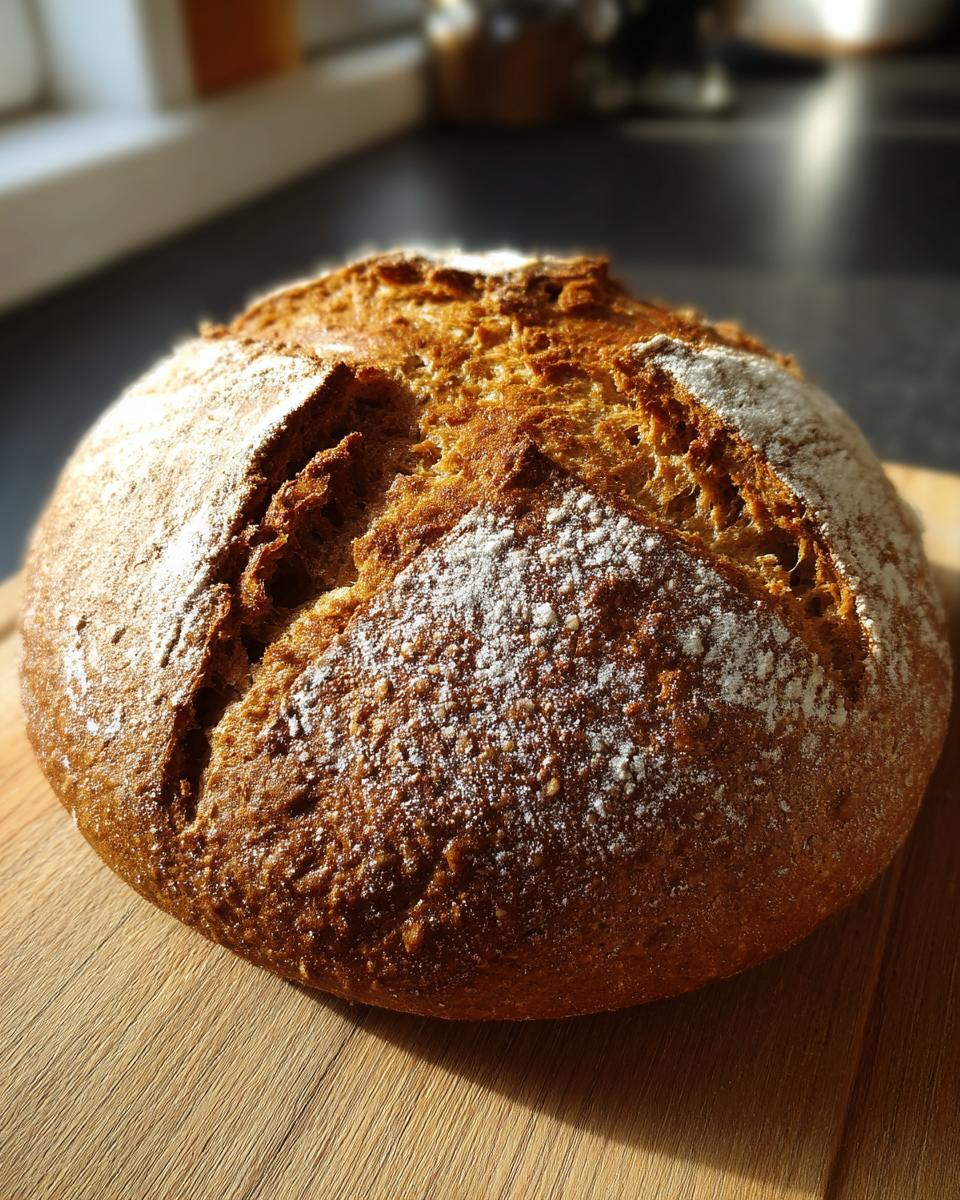
Why You’ll Love This Irish Brown Bread
This bread is pure comfort in every bite, and here’s why:
- Effortless to make – No yeast, no waiting! Just mix, shape, and bake.
- Wholesome goodness – Packed with fiber from wholemeal flour, and tangy buttermilk keeps it tender.
- Endlessly versatile – Perfect with butter and jam for breakfast, or alongside a cozy soup for dinner.
- Crusty, crumbly texture – That golden crust and slightly dense interior? Pure Irish magic.
It’s the kind of bread that feels like a hug from the oven.
Ingredients for Irish Brown Bread
Grab these simple, honest ingredients—the kind you probably already have in your pantry:
- 250g wholemeal flour – That nutty, hearty base that gives this bread its soul.
- 250g plain flour – Balances the wholemeal for just the right crumb.
- 1 tsp baking soda – Our rising hero (no yeast needed!).
- 1 tsp salt – Just enough to make the flavors sing.
- 400ml buttermilk – Tangy, creamy magic that keeps the bread tender. Shake the carton well!
See? No fuss, no fancy stuff—just good, honest bread waiting to happen.
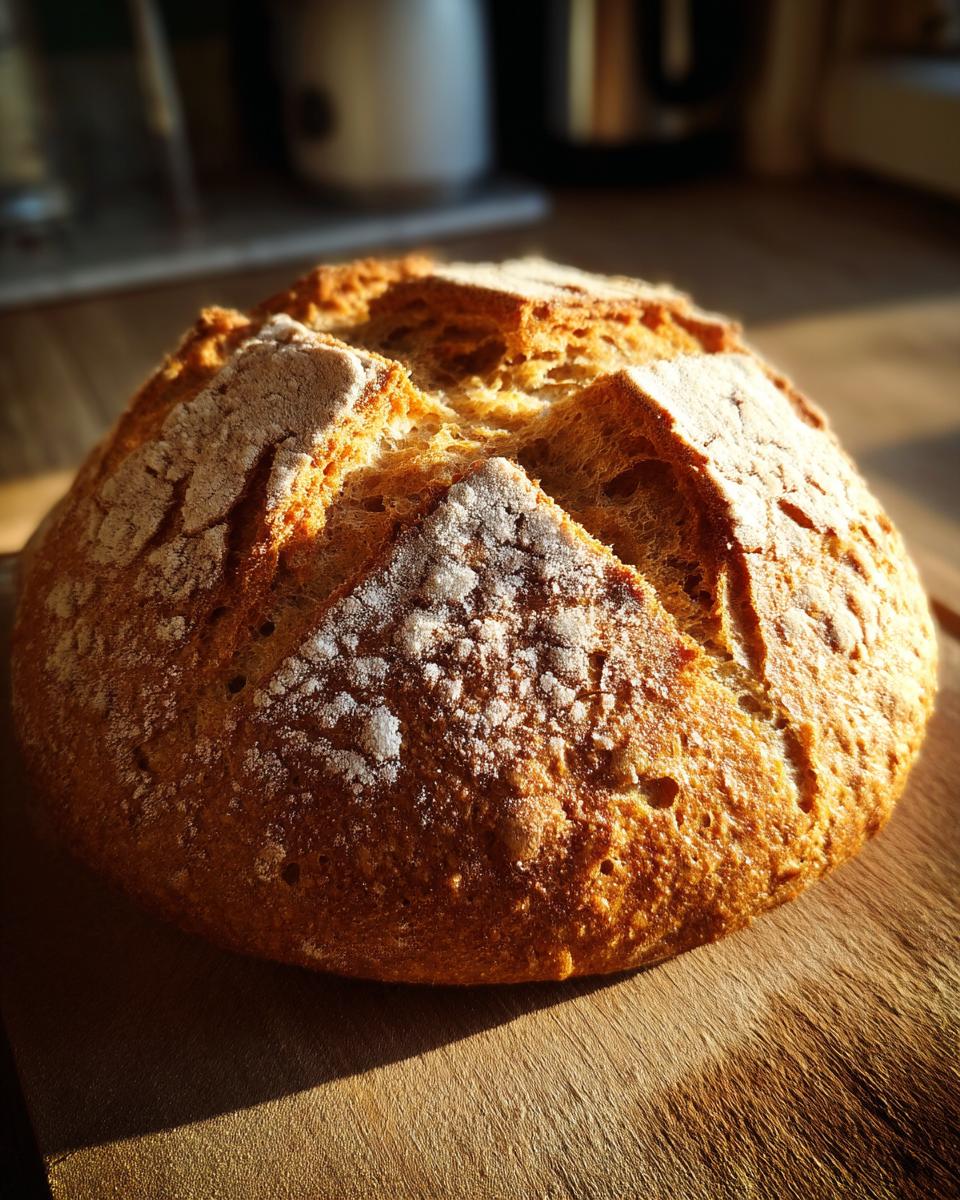
How to Make Irish Brown Bread
Ready to bake the easiest, most satisfying bread of your life? Here’s how it’s done—just like my gran taught me:
- Heat things up: Preheat your oven to 200°C (180°C fan) and grab a baking tray—no need to grease it, the dough holds its own.
- Mix dry ingredients: In a big bowl, whisk together the wholemeal flour, plain flour, baking soda, and salt. No sifting needed—just give it a good stir to banish any sneaky baking soda lumps.
- Bring it together: Make a well in the center and pour in the buttermilk. Stir with a wooden spoon until you’ve got a sticky, shaggy dough. Don’t overmix! A few dry bits are fine—they’ll hydrate as it rests.
- Shape with confidence: Turn the dough onto a lightly floured surface and gently pat it into a round loaf about 2 inches thick. No kneading—this isn’t that kind of bread. Rough edges? That’s charm!
- The sacred cross: Use a sharp knife to cut a deep cross on top (this lets heat penetrate and honors tradition).
- Bake to golden perfection: Slide it onto the tray and bake for 30-35 minutes. When it’s done, the loaf will sound hollow when tapped underneath, and the crust will be firm and golden.
- Cool it right: Transfer to a wire rack immediately—this stops the bottom from steaming and getting soggy. Resist slicing for at least 20 minutes (I know, it’s hard!).
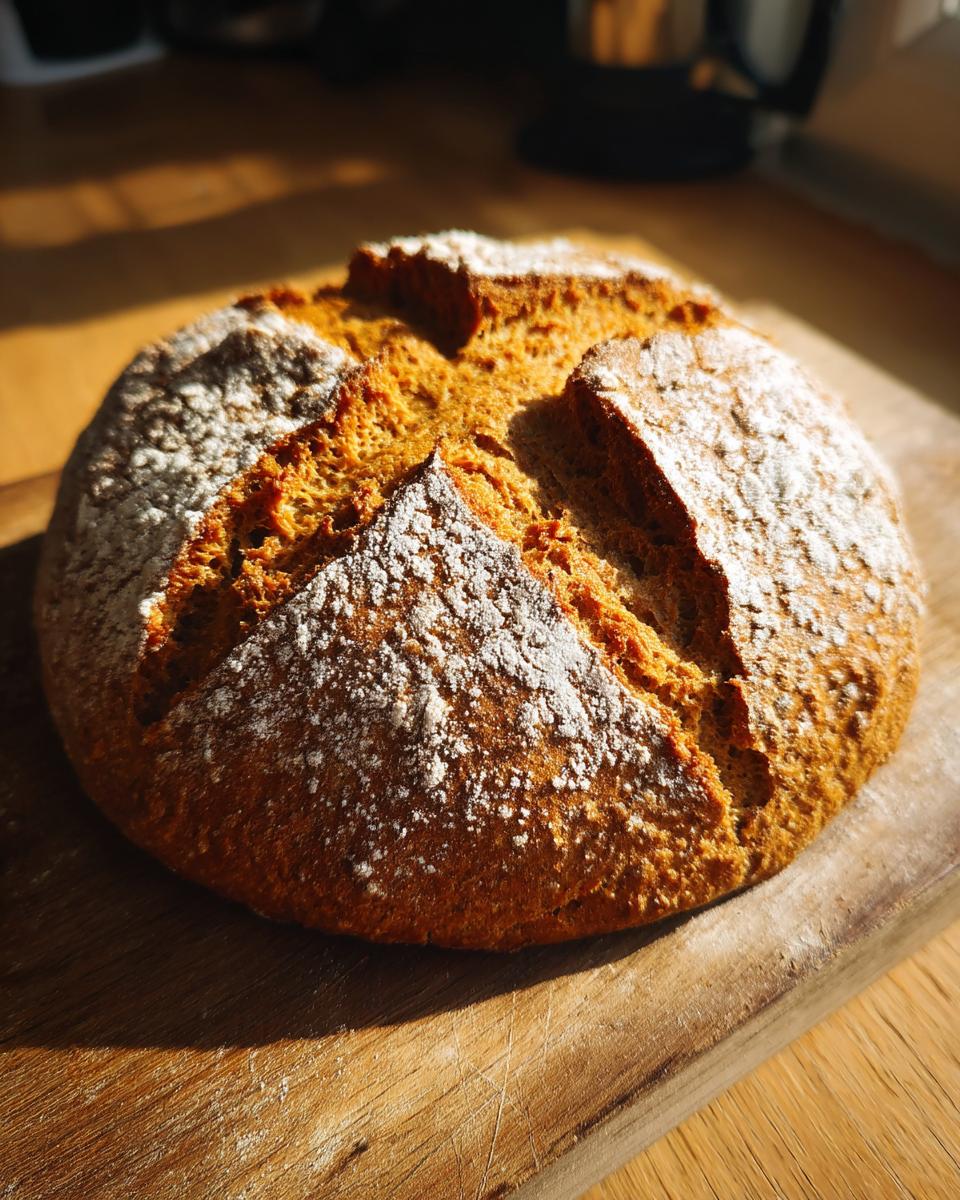
Shaping and Baking Tips
Here’s the secret to that perfect rustic look: handle the dough like you’re giving it a gentle hug—no squeezing! The cross isn’t just pretty; it helps the center bake evenly. And if your crust browns too fast, tent it loosely with foil. Want extra crunch? Spritz the loaf with water before baking for a professional bakery-style crust.
Ingredient Notes and Substitutions
No buttermilk? No problem! Here’s how to tweak this recipe without losing that signature Irish charm:
- Buttermilk swap: Mix 1 tbsp lemon juice or vinegar into 400ml regular milk and let it sit for 5 minutes—instant tangy substitute. Plain yogurt thinned with a splash of milk works too.
- Flour flexibility: All wholemeal flour makes a denser loaf (grandad’s favorite!), while all plain flour gives a lighter crumb. For gluten-free, use a 1:1 GF blend—just add 1 tsp xanthan gum.
- Baking soda blues: If yours is clumpy, crush lumps with a spoon before mixing. No substitutions here—it’s the only leavener!
Remember: the dough should be sticky, not dry. Add a splash more buttermilk if needed—trust the shaggy texture!
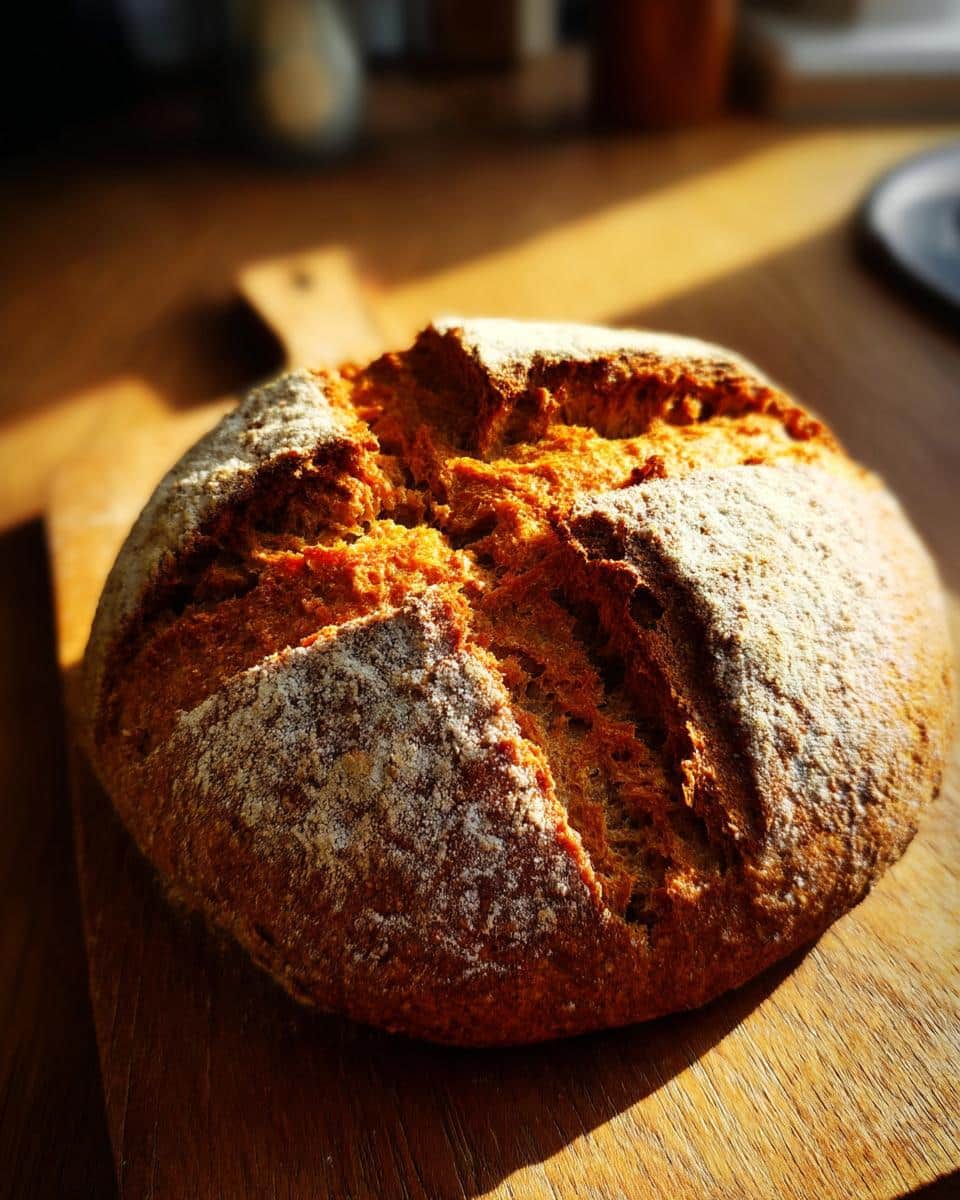
Serving Suggestions for Irish Brown Bread
Oh, the possibilities! This bread is like a blank canvas for deliciousness. My absolute favorite? A thick slab still warm from the oven, slathered with good Irish butter that melts into all those nooks and crannies. For breakfast, try it toasted with a dollop of blackberry jam—the tartness plays so nicely with the nutty bread. At dinner, it’s heavenly dipped into a steaming bowl of potato leek soup or alongside a hearty beef stew. And don’t even get me started on how perfect it is with a wedge of sharp cheddar and a cup of tea. Simple, satisfying, and oh-so-Irish.
Storing and Reheating Irish Brown Bread
This bread tastes best the day it’s baked, but here’s how to keep it fresh and delicious for days (if it lasts that long!):
- Room temp storage: Wrap the cooled loaf tightly in a clean tea towel or beeswax wrap and pop it in an airtight container. It’ll stay fresh for 2-3 days this way—the crust softens slightly, but the flavor deepens beautifully.
- Reviving stale bread: If your loaf gets a bit dry, sprinkle it with water and warm in a 180°C oven for 5 minutes. It’ll come back to life with a crisp crust and soft interior.
- Freezing tip: Slice before freezing so you can toast individual pieces straight from the freezer—perfect for rushed mornings!
Pro tip: Never store it in the fridge—that just makes it dry out faster!
Nutritional Information for Irish Brown Bread
Here’s the scoop on what’s in each hearty slice (based on a 12-slice loaf):
- Calories: 120
- Carbs: 25g (3g fiber)
- Protein: 4g
- Fat: 1g (0.5g saturated)
- Sodium: 300mg
These numbers can wiggle a bit depending on your flour brand or buttermilk’s fat content—but hey, it’s wholesome fuel! The wholemeal flour packs more fiber than white bread, so you’re getting real staying power with every bite.
Frequently Asked Questions About Irish Brown Bread
Over the years, I’ve gotten the same wonderful questions about this recipe—here are the answers straight from my flour-dusted notebook:
Why is my bread so dense?
Don’t worry—this is supposed to be a hearty loaf! But if it’s too heavy, you might have overmixed the dough (stop as soon as it comes together) or packed the flour when measuring (always spoon it lightly into the cup). Old baking soda can also be a sneaky culprit—test it by dropping a pinch in vinegar; it should bubble vigorously!
Can I freeze Irish brown bread?
Absolutely! Wrap the cooled loaf (or slices) tightly in foil, then pop in a freezer bag. It keeps beautifully for 3 months. Thaw at room temperature or toast straight from frozen—perfect for sudden soup cravings!
Why cut a cross on top?
Tradition aside, that deep cross helps heat penetrate the dense dough so it bakes evenly. Plus, it gives you four perfect “quarters” to break apart—just like they do in Irish cottages!
Can I add raisins or seeds?
Oh yes! My uncle always tosses in a handful of raisins soaked in tea. For seeds, try 2 tbsp of sunflower or pumpkin seeds kneaded in gently. Just don’t go overboard—this bread shines in its simplicity.
Final Thoughts
Now it’s your turn—roll up those sleeves and bake this cozy loaf! I’d love to hear how yours turns out. Tag me with your crusty masterpieces or that perfect butter-melting shot. Happy baking!
Print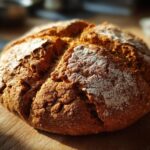
Crusty Irish Brown Bread Recipe You’ll Devour in 2 Days
- Total Time: 45 mins
- Yield: 1 loaf 1x
- Diet: Vegetarian
Description
A traditional Irish brown bread made with wholemeal flour and buttermilk. This hearty bread is perfect for breakfast or as a side dish.
Ingredients
- 250g wholemeal flour
- 250g plain flour
- 1 tsp baking soda
- 1 tsp salt
- 400ml buttermilk
Instructions
- Preheat the oven to 200°C (180°C fan).
- Mix the flours, baking soda, and salt in a large bowl.
- Add the buttermilk and stir until a sticky dough forms.
- Shape the dough into a round loaf and place on a baking tray.
- Cut a cross on top of the loaf.
- Bake for 30-35 minutes until golden and sounds hollow when tapped.
- Cool on a wire rack before slicing.
Notes
- Store in an airtight container for up to 3 days.
- Serve with butter or jam.
- Prep Time: 10 mins
- Cook Time: 35 mins
- Category: Bread
- Method: Baking
- Cuisine: Irish
Nutrition
- Serving Size: 1 slice
- Calories: 120
- Sugar: 1g
- Sodium: 300mg
- Fat: 1g
- Saturated Fat: 0.5g
- Unsaturated Fat: 0.5g
- Trans Fat: 0g
- Carbohydrates: 25g
- Fiber: 3g
- Protein: 4g
- Cholesterol: 2mg
Keywords: Irish brown bread, wholemeal bread, traditional bread




